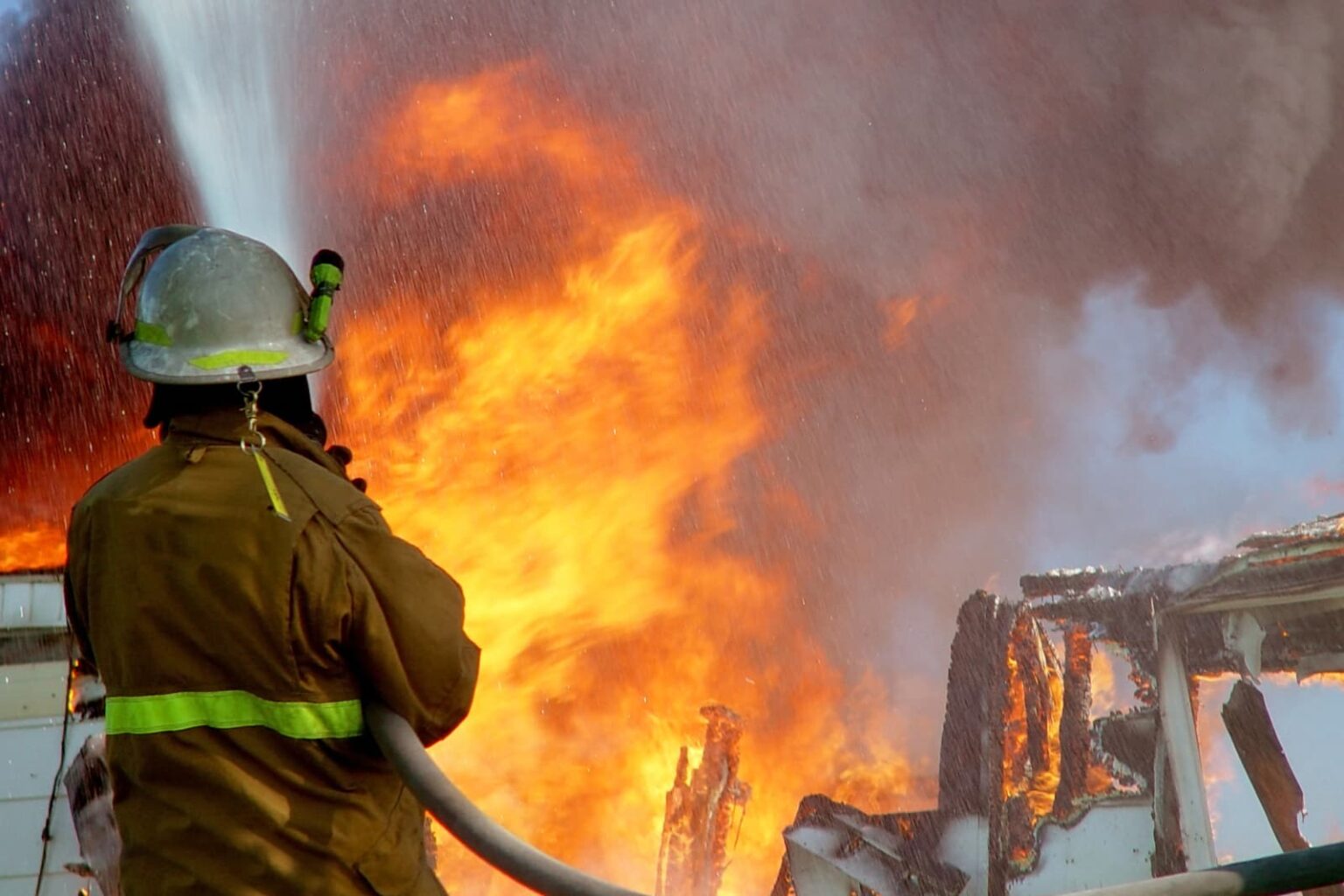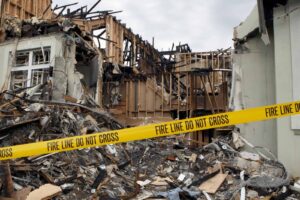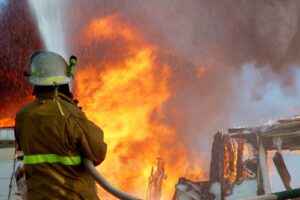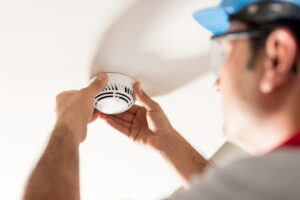A house fire can be an extremely stressful situation. During an emergency, people tend to panic and forget what to do if they’re not well-trained. This is why it’s important to learn what to do in a house fire and practice your fire safety plan. A thoroughly-practiced fire safety plan will help keep you and your loved ones safe should the unexpected occur.
Keep reading for our tips on what to do in a fire:
What to remember in case of fire at home
Exit quickly and safely. 
- Your first priority should be exiting safely. Once you’ve left the building, do not go back inside.
- Do not waste time trying to gather your belongings. Life safety is the most important thing – don’t risk your life or your loved one’s life for replaceable objects.
- Before touching doorknobs, check to see if the door is warm. Use the back of your hand to carefully feel the door. If the door is hot to the touch or it seems like there is smoke behind it, use a secondary exit route.
- If you encounter smoke as you exit, get as low to the ground as possible.
- Close doors behind you as you exit to help slow the spread of fire.
- Yell “Fire!” as you exit the building to alert anyone nearby.
- If you live in a building with an elevator, do not use it during a fire. Use the stairs to make your way out of the building.
- Head to your household’s designated meeting spot.
- Call 911, explain the situation, and let them know your address.
If you cannot use your exit routes, stay put.
- Stay in the room and keep all doors closed.
- Place a wet towel under the door and open any windows.
- Call 911 and alert your household members if possible. You can use a bright cloth or flashlight to signal outside for help.
What should you do if someone is on fire?
If someone’s clothes catch on fire, remember to stop, drop, and roll.
- Stop – Stop what you’re doing. Trying to run or walk can make the fire worse.
- Drop – Drop onto the floor and cover your face.
- Roll – Roll over or roll back and forth until the flames are out.
Once the flames are out, address any burns on your skin. Apply water for 3-5 minutes to cool the burns, and call for medical attention as soon as possible.
How to use a fire extinguisher
In a fire emergency, you don’t want to waste precious seconds reading the instructions on your fire extinguisher. Learn how to operate a fire extinguisher safely and effectively before you need to use it so that you’re prepared.
- Exact operation instructions may depend on your unit’s manufacturer and model, so seek instructions for your specific extinguisher.
- Install the extinguisher in a location that is easily accessible for adults but out of children’s or pet’s reach, such as high on the wall near an exit. Always store fire extinguishers away from heat sources.
- Regularly check if your fire extinguishers are properly charged. Most units have a test button so that you can confirm the correct pressure. If the extinguisher has low pressure or is damaged, have it repaired or replaced as soon as possible.
- When using the fire extinguisher, keep your back towards the exit. Make sure you won’t block the exit route when you deploy the fire extinguisher.
- If the fire does not immediately improve after using the extinguisher, drop it and exit right away. Most fire extinguishers only contain enough power for 8 seconds of use.
The most common acronym for using a fire extinguisher is PASS:
- P – Pull the pin
- A – Aim at the base of the flames
- S – Squeeze the trigger
- S – Sweep from side to side
After training hundreds of people how to use fire extinguishers, the most common mistakes that people make are:
- Aiming too high (above the base of the flames)
- Starting too far away from the fire
The most common extinguishers (2A10BC dry chemical extinguishers) have about a 10-20 second discharge time. If you start too far away from the fire, you could run out of extinguishing agent before it is close enough to be effective.
Stay Safe During a Fire Emergency
While it’s knowledge we hope to never use, learning what to do in a fire emergency is essential. Quick action during a fire emergency can save lives. Knowing what to do in case of fire will help keep you, your pets, and your loved ones safe.











